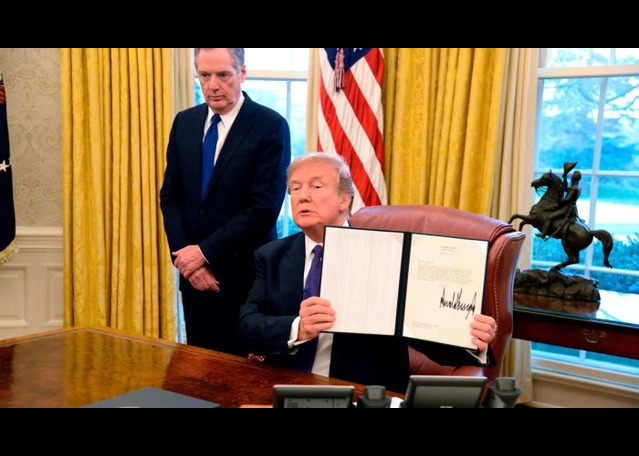The Ripple Effects of Trump's Tariff Threats: A Global Trade Perspective
The return of Donald Trump to the presidency is shaping up to be a significant turning point for international trade, with his early-term threats to impose sweeping tariffs on imports from Canada, Mexico, and China. Promising to levy 25% tariffs on Canadian and Mexican goods and an additional 10% on Chinese imports, these proposals signal the renewal of aggressive trade strategies reminiscent of his first term. You can understand in full about the tariffs on this blog, read it HERE.
Political Strategy in PlayThe proposed tariffs are more than mere economic measures; they are tools in Trump’s broader agenda to address immigration and drug trafficking issues. By leveraging trade penalties, the administration aims to compel neighbouring countries to tighten border controls and curb drug inflows. This mirrors Trump's previous tariff threats, which were often employed as bargaining chips in larger negotiations.
For instance, during his first term, tariffs on steel and aluminium from Canada and Mexico led to retaliatory measures and were only lifted after the ratification of the USMCA agreement. This cycle of threats and concessions underscores the administration's approach: disrupt to negotiate.
Price in Tariffs Source: Bloomberg, MUFG & MacrobondEconomic Fallout for Canada and MexicoFor Canada, the proposed 25% tariff is an economic shockwave. With the U.S. accounting for 75% of Canadian exports, such a move could trigger a recession. Key sectors like energy, autos, and consumer goods, which form the backbone of Canada's export economy, are particularly vulnerable. The ripple effects would not only disrupt Canadian industries but could also lead to higher gasoline prices and supply chain issues within the U.S. itself.
Mexico, facing similar threats, has a more complex challenge due to its larger role in immigration and drug trafficking debates. While the Mexican government has taken steps to manage migration and collaborate with the U.S., these tariff threats could strain relations and disrupt economic stability.
Markets have already shown scepticism regarding the likelihood of these tariffs being fully implemented. Initial volatility in the Canadian Dollar (CAD) and Mexican Peso (MXN) was short-lived, with both currencies stabilizing shortly after Trump's announcements. However, the spectre of higher tariffs keeps uncertainty alive, which could sustain heightened volatility in the coming months.
USDCAD H1 Chart Source: Finlogix Charts
A Global Trade PerspectiveThese tariff threats also echo the ongoing U.S.-China trade tensions. During Trump’s first term, tariffs on Chinese goods pushed the average tariff rate from 3% to nearly 19%, weakening the Chinese Yuan significantly. If similar measures are pursued in Trump's second term, the global economic landscape could face new disruptions, especially with weakened supply chains and a potential escalation of trade wars.
The looming tariff threats highlight the fragile balance of international trade and diplomacy. While market participants remain hopeful that these measures will be used as negotiating tactics rather than actual policies, the unpredictability of outcomes warrants caution.
For nations like Canada and Mexico, the road ahead involves strategic navigation through a volatile trade landscape. For global markets, the key lies in resilience and adaptability as they brace for the ripple effects of these political manoeuvres.
This content may have been written by a third party. ACY makes no representation or warranty and assumes no liability as to the accuracy or completeness of the information provided, nor any loss arising from any investment based on a recommendation, forecast or other information supplies by any third-party. This content is information only, and does not constitute financial, investment or other advice on which you can rely.





















